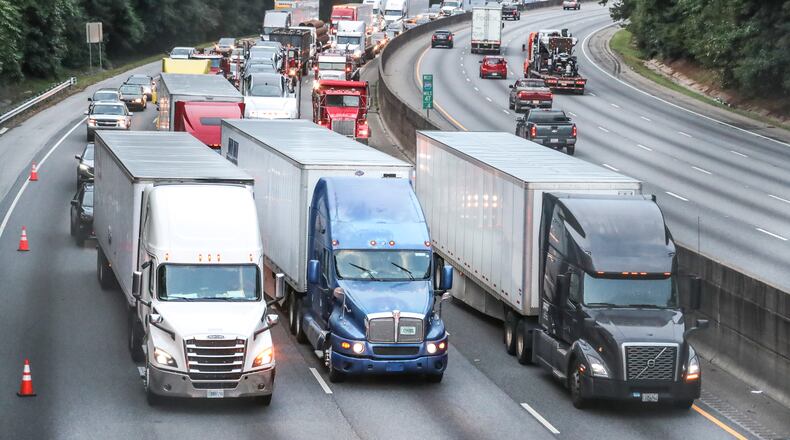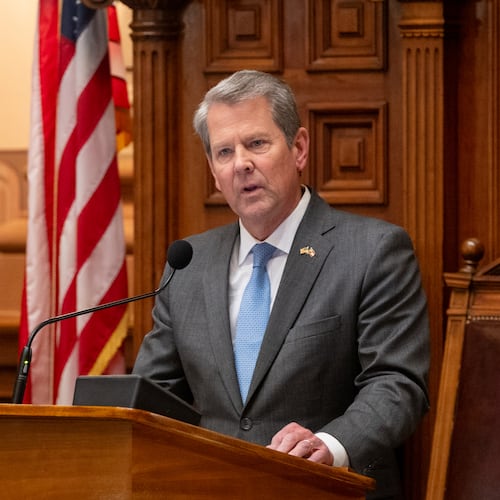Georgia lawmakers are discussing plans to raise billions of dollars for road and rail improvements to accommodate the booming business of transporting goods.
The money could come from a variety of revenue sources, including a fee on packages delivered to consumers and additional motor fuel taxes. Lawmakers are still discussing the financial details. But on Monday they introduced a bill that would create a new budget fund for freight transportation improvements.
Though the final size of the proposed investment has not been determined, it could rival or surpass the $1 billion-a-year investment in road improvements the General Assembly approved in 2015. That led to the $10 billion road-building plan that includes toll lanes and new interchanges across metro Atlanta.
“When you look around the state there are so many needs,” said Rep. Rick Jasperse, R-Jasper, chairman of the House Transportation Committee and sponsor of House Bill 617, which would establish the new fund to pave the way for the freight investment. “We’ve got to find ways to fund it.”
The move comes amid explosive growth in shipping through the Port of Savannah and a boom in e-commerce fueled in part by the coronavirus pandemic. The volume of freight moving through Georgia is expected to soar 30% by 2045, a legislative report concluded two years ago.
Keeping that freight moving poses a major challenge. Metro Atlanta has nine of the nation’s worst freight bottlenecks, according to a recent report by the American Transportation Research Institute. Among them are Spaghetti Junction northeast of Atlanta and the I-285/I-20 interchange west of the city.
More trucks also means more truck accidents, which threaten public safety and stymie traffic. There’s also a nationwide shortage of truck drivers and truck parking.
The Legislature spent two years studying ways to accommodate the growth in freight. In 2021 a committee recommended spending an additional $1 billion to $1.5 billion a year to widen highways, rebuild interchanges, improve railroad crossings and otherwise expand Georgia’s transportation network. That would increase the Georgia Department of Transportation’s state-funded budget by one-third or more.
But lawmakers have not acted on those recommendations. That could change as soon as this year.
HB 617 would create the Georgia Freight 2050 Program to be administered by GDOT. It also would direct the agency’s planning director to develop a plan of projects and how to pay for them.
GDOT is already updating its existing freight plan, and it is finishing a study on ways to pay for the projects. The legislative committee recommended the state explore a variety of funding sources, including additional fuel taxes, a fee on packages delivered to consumers, mileage-based user fees and statewide assessments on warehouse distribution facilities.
“How can we capitalize on the success of the port throughout the state without burdening the state?” Jasperse said. “We’ve got to be vigilant and smart to find a funding pattern that sustains it.”
Seth Millican, executive director of the Georgia Transportation Alliance, an industry group within the Georgia Chamber of Commerce, hopes lawmakers can reach an agreement on a funding plan this year. He said additional infrastructure investments are needed for continued economic development.
“Being able to provide our business community with the infrastructure they need, as well as our citizens, is going to be a critical part of our success moving into the future,” Millican said.
Jasperse was circumspect about the prospect of legislative funding this year.
“I would hope that we can,” he said. “What we do today will take years to get in place, and people want solutions now.”
Senate Majority Leader Steve Gooch, R-Dahlonega, was skeptical there’s enough time left in the legislative session to make the case to the General Assembly. But he agrees Georgia needs to spend billions of dollars more to address the problem.
“We don’t want to kick the can too far down the road,” Gooch said, “because some of those projects need to get done sooner rather than later.”
About the Author
The Latest
Featured



